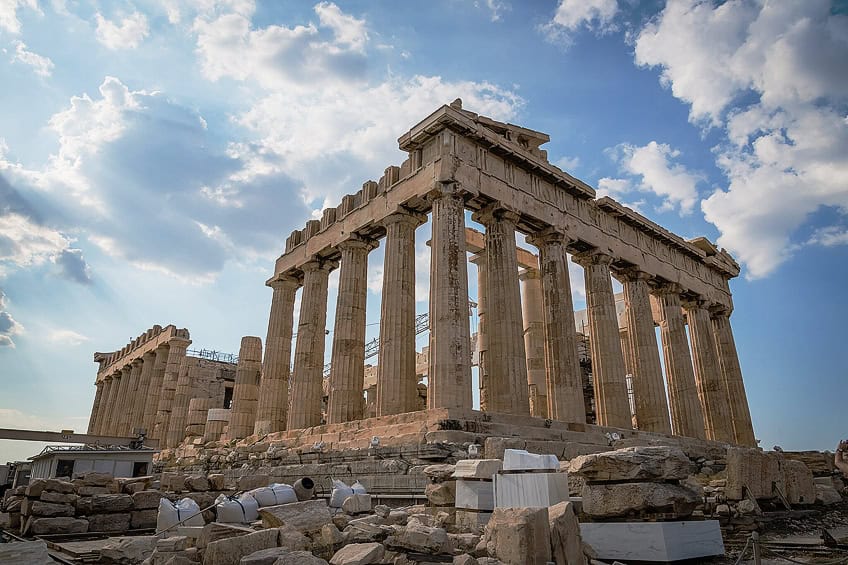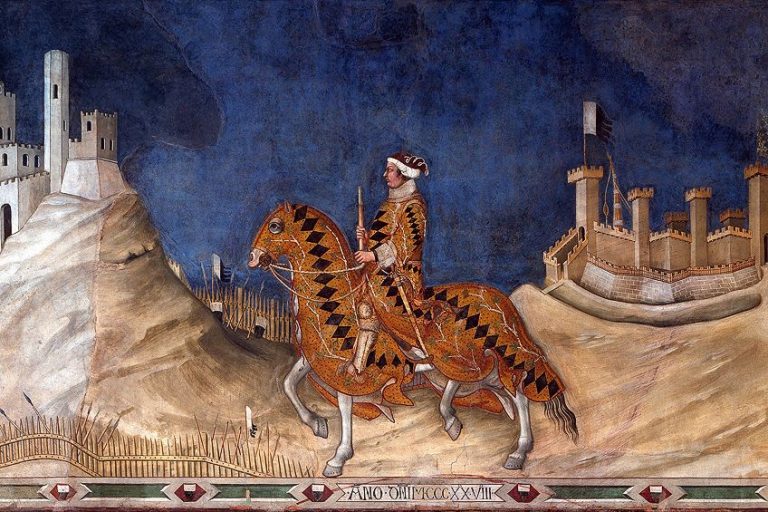Ancient Art – A Glimpse into the Past
Ancient art is a captivating window into the cultural and artistic expressions of civilizations long past. From the intricate pottery of ancient Greece to the monumental sculptures of Egypt and the detailed cave paintings of prehistoric humans, ancient art reflects the beliefs, values, and daily life of societies throughout history. This art not only showcases remarkable craftsmanship but also provides invaluable insights into the evolution of human creativity and expression. In this article, we will delve into the diverse and fascinating world of ancient art, exploring its various forms, significance, and enduring legacy.
Key Takeaways
- Ancient art provides insight into historical cultures and societal values.
- It includes diverse mediums and styles, indicative of evolving civilizations.
- The study of ancient art is vital for piecing together historical developments.

Origins and Materials of Ancient Art
Ancient art encompasses an incredibly diverse range of works from the earliest human societies. It refers to the various forms of artistic expression that originated in ancient cultures and civilizations, most notably those of Egypt, Greece, Rome, and Mesopotamia. These creations are not merely artifacts; they are a window into the values, beliefs, and daily life of our ancestors, capturing the essence of societies that have long since faded into history.
With an array of mediums at their disposal, ancient artists crafted objects of both functional and ceremonial significance, from the colossal structures of the Egyptian pyramids and the intricate pottery of the Greeks to the enduring frescoes of the Romans.
The materials and techniques used in ancient art were a direct response to the resources and knowledge available to different civilizations, reflecting their innovations in a tangible form. As these societies evolved, so too did their artistic styles, transitioning through identifiable periods that archaeologists and historians have closely studied to better understand the chronological development of human creativity and cultural expression.
Early Dynastic and Stone Age Creations
In the nascent stages of human artistic expression, Stone Age artists utilized materials readily available in their environment. They carved stone, ivory, bone, and wood to create statues, totems, and amulets. The artwork from this era, like the Venus of Willendorf, demonstrates not just aesthetic appeal but also cultural and religious significance. Artists also applied pigments from minerals and organic compounds to cave walls, resulting in some of humanity’s earliest known painted works. Materials used in Stone Age art include:
- Stone: Flint, sandstone, limestone
- Organic: Ivory from tusks, bones, wood
- Pigments: Charcoal, ochre, malachite

Bronze and Iron Age Developments
With the advent of the Bronze Age, a transformative period marked by alloy creation, artists began crafting intricate works from bronze, a durable mixture of copper and tin. This era birthed sophisticated casting techniques, allowing for more detailed and larger sculptures. The Iron Age further revolutionized art-making with the introduction of iron, a stronger material that expanded the possibilities of tools and weaponry. Artifacts from this period also display the use of gold, silver, lead, and clay. Marble was highly prized in areas like Ancient Greece and Rome for its durability and natural beauty, leading to iconic marble statuary that persists in cultural memory. Notable Bronze and Iron Age materials include:
- Metals: Bronze (copper and tin), Iron, Gold, Silver, Lead
- Non-metals: Clay (for pottery), Marble (for sculpture)
Through an understanding of the materials used by ancient artists, one gains deeper insight into the technological advancements and resource availability of historical societies.
Cultural Impact and Themes in Ancient Art
Ancient art serves as a historical ledger, capturing the cultural values and narratives predominant in past societies. It illuminates the spiritual beliefs, political hierarchy, and social paradigms of the times.

Religious and Mythological Symbolism
Ancient civilizations often infused their art with religious and mythological symbolism. In Greece, deities like Athena and Apollo were commonly depicted in sculptures and on pottery, which helped to endorse the cultural and religious beliefs of the Greek polis. For instance, Athena, the goddess of wisdom and warfare, was frequently portrayed in Ancient Greek Art, most notably in the massive statue that stood inside the Parthenon.
Similarly, Egyptian art is renowned for its representation of gods and goddesses associated with fertility, the Nile, and the afterlife.
Egyptian Art used a rich symbolic language that communicated the divine right of pharaohs and their connection to the gods. Murals in tombs often illustrated the journey to the afterlife, underscored by a strong belief in the immortal continuity of the soul. Notable entities like the Book of the Dead presented a guide for the deceased through the underworld, encapsulating religious practices and philosophies.
Political Influence and Power
Art in ancient societies was not merely for aesthetic pleasure but also a tool for political propaganda. Rome is particularly recognized for its art that celebrated the political might and achievements of its leaders. Triumphal arches and monumental structures functioned as public reminders of Roman power and military victories. For example:
- Structures: Temples and monuments, specifying the dominance of Rome.
- Sculpture: Busts of emperors—politics immortalized in stone.

The leadership often commissioned works of art to solidify their authority and legacy, intertwining personal and state successes. This is evident in sculptures of Roman emperors, which were strategically placed across the empire to denote the reach of their reign and influence. Artifacts from these periods continue to influence modern culture and art, underscoring the lasting impact of ancient civilizations on contemporary society.
Key Styles and Periods
Within the panorama of ancient art, key periods and styles stand out, particularly in the realms of Greek and Egyptian art. They have left indelible marks on the history of art, characterized by specific forms, techniques, and themes.
Greek Classical and Hellenistic Art
Greek art underwent significant transformation from the Classical to the Hellenistic periods. The Classical period (c. 480-323 BCE) is known for its emphasis on balance, proportion, and controlled expression. Greek sculptors like Phidias and Myron aimed for idealized human forms, often portraying the gods in marble with a sense of grace and perfection. Notable constructions from this era include the Parthenon, a paragon of Doric architecture and sculptural innovation. In Greek pottery, two prominent styles emerged: the Black-Figure and Red-Figure techniques.

The Black-Figure style was prominent in the early Classical period, giving way to the Red-Figure style, which allowed for greater detail and realism through the innovative use of perspective. The subsequent Hellenistic period (c. 323-31 BCE) witnessed the expansion of Greek culture across Alexander the Great’s empire. Art of this period often exhibited more expressive forms, dynamic poses, and heightened emotional content. Greeks’ mastery of perspective and proportion evolved further, impacting not only sculpture but also the burgeoning practices of mural painting and mosaics.
Egyptian Middle to New Kingdoms
Ancient Egypt’s art from the Middle Kingdom (c. 2050–1710 BCE) to the New Kingdom (c. 1570–1070 BCE) is characterized by strict conventions and symbolic representation. The Egyptian artists of the Middle Kingdom focused on continuity, creating statues, reliefs, and paintings that adhered to a timeless aesthetic primarily for tombs and temples.
During the Third Intermediate Period (c. 1069–653 BCE), Egypt saw a split in authority but continued the strong tradition of funerary art, with intricate sarcophagi and tomb paintings representing religious beliefs and practices.
In the New Kingdom, a notable shift towards more fluid and dynamic forms occurred. This period saw the construction of massive temple complexes such as Karnak and the tombs in the Valley of the Kings. The portrayal of figures in art became less rigid, allowing for action and movement, reflecting the empire’s wealth and power. Artisans developed advanced techniques in stone carving and painting, employing a wide color palette on various surfaces.
Preservation and Study of Ancient Art
Preservation of ancient art allows institutions like the Metropolitan Museum of Art and the British Museum to serve as stewards of humanity’s shared heritage. These institutions employ meticulous conservation strategies to safeguard relics from Antiquity, ensuring their endurance for future educational purposes.

Collaboration is pivotal amongst museums, including the National Archaeological Museum, to foster the growth of best practices in preservation. Their efforts go beyond mere maintenance, contributing to the overall understanding of civilizations by studying ancient trade, socio-cultural norms, and the spread of philosophies like Christianity through the lens of art. Through education, these establishments make the enigmatic world of antiquity accessible to the public, promoting appreciation and recognition of diverse cultural achievements across epochs.
Ancient art stands as a testament to the ingenuity, creativity, and cultural richness of past civilizations. From the symbolic motifs of Mesopotamian cylinder seals to the majestic temples of ancient Egypt and the exquisite mosaics of the Roman Empire, each artwork carries with it a story of human endeavor and artistic mastery. By studying ancient art, we gain not only a deeper appreciation for the artistic achievements of our ancestors but also a greater understanding of the beliefs, traditions, and societal structures that shaped their world. As we continue to unearth and preserve these treasures, ancient art remains an enduring source of inspiration and fascination, connecting us to our shared human heritage across millennia.
Frequently Asked Questions
What Are Prominent Examples of Ancient Art?
Prominent examples of ancient art include the wall paintings and sculptures of Egypt, the pottery and temples of ancient Greece, and the terracotta figures and bronzes of China. Each of these artifacts offers insights into the cultures they come from.
What Distinguishes Ancient Art from Other Periods in History?
Ancient art is distinguished from other periods by its focus on religious and societal narratives, often created to serve as a representation of deities, pharaohs, and other figures of great importance. Its styles are defined by the rigid and symbolic nature seen in works dating from approximately 40,000 BCE to 600 CE.
What Are Some of the Most Famous Pieces of Ancient Art?
Some of the most famous pieces of ancient art include the Great Sphinx of Giza and the statues of pharaohs in Egypt, the Parthenon friezes and the statue of Zeus at Olympia in Greece, and the Terracotta Army in China. These works have transcended time and continue to be celebrated for their artistic innovation and cultural significance.
How Is the Timeline of Ancient Art Typically Structured?
The timeline of ancient art is typically structured starting from the Prehistoric era, proceeding through the Ancient Near East, Egypt, Aegean, Greek, Etruscan, Roman, and concluding with the early Christian and Byzantine art periods. Each period represents a distinct era with characteristic artistic styles and achievements.
Isabella studied at the University of Cape Town in South Africa and graduated with a Bachelor of Arts majoring in English Literature & Language and Psychology. Throughout her undergraduate years, she took Art History as an additional subject and absolutely loved it. Building on from her art history knowledge that began in high school, art has always been a particular area of fascination for her. From learning about artworks previously unknown to her, or sharpening her existing understanding of specific works, the ability to continue learning within this interesting sphere excites her greatly.
Her focal points of interest in art history encompass profiling specific artists and art movements, as it is these areas where she is able to really dig deep into the rich narrative of the art world. Additionally, she particularly enjoys exploring the different artistic styles of the 20th century, as well as the important impact that female artists have had on the development of art history.
Learn more about Isabella Meyer and the Art in Context Team.
Cite this Article
Isabella, Meyer, “Ancient Art – A Glimpse into the Past.” Art in Context. April 19, 2024. URL: https://artincontext.org/ancient-art/
Meyer, I. (2024, 19 April). Ancient Art – A Glimpse into the Past. Art in Context. https://artincontext.org/ancient-art/
Meyer, Isabella. “Ancient Art – A Glimpse into the Past.” Art in Context, April 19, 2024. https://artincontext.org/ancient-art/.











